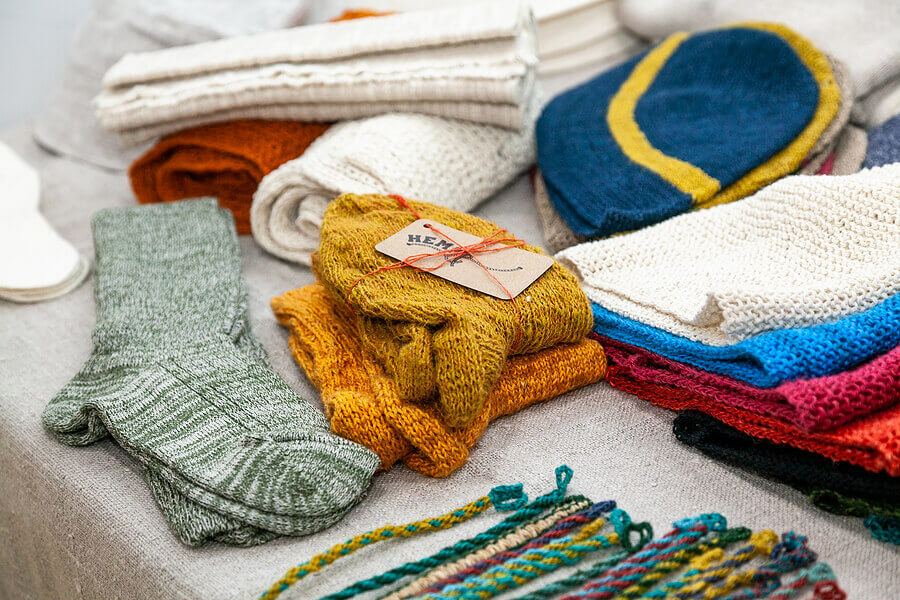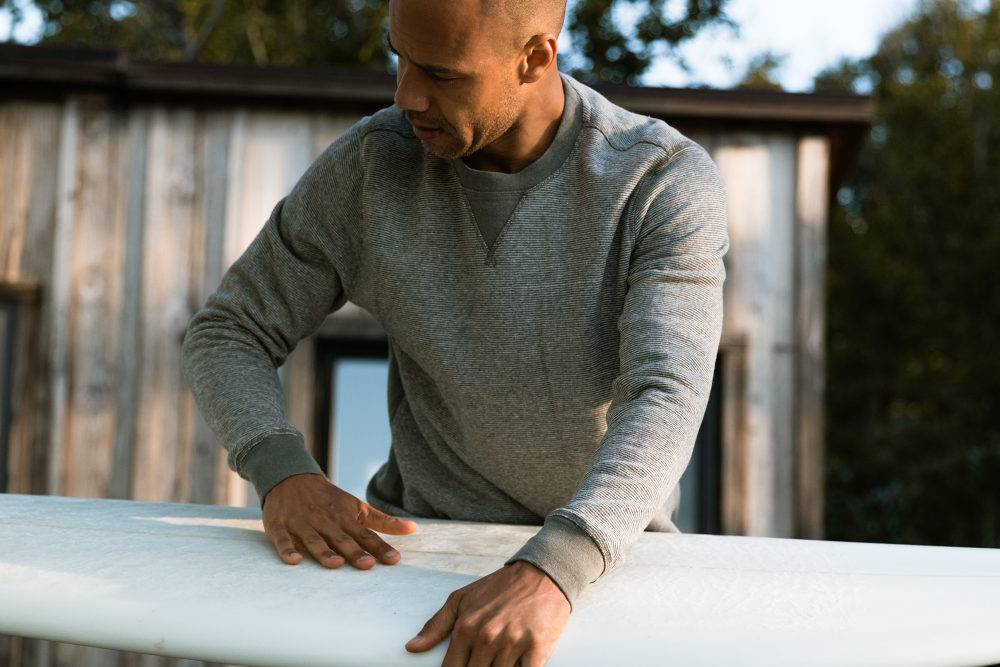Handy Ideas For Selecting Hemp Clothing
Wiki Article
Why Is Hemp Stronger, More Durable, And Bidegradable Than Cotton?
The inherent properties of hemp in addition to its cultivation methods is what makes it more biodegradable and long-lasting than cotton. Here's why- Biodegradability-
Natural Fibers - Hemp's fibers can be biodegradable. Hemp textiles and clothing decompose in a natural manner over the passage of time. They are returned to the environment, without leaving behind any waste that is long-lasting. Contrast this with synthetic fibers, like polyester, which may take hundreds of years to decompose.
Hemp textiles are not likely to contain chemical treatments or additives that may hinder biodegradability. Contrary to cotton, which may contain synthetic chemicals (such as dyes and finishers) which can hinder biodegradation, hemp textiles do not.
Durability-
Hemp fibers have a reputation for strength and durability. Hemp textiles and clothing are less susceptible to wear and tear which makes them more durable compared to some cotton products. This means that hemp clothes can stand up to many wash cycles and wear cycles before showing signs of deterioration.
Less Prone to Pillingless prone to pilling Hemp fabrics are less prone to pilling (the creation of small fuzzy balls on the fabric's surface) compared to cotton. This attribute contributes to their overall quality and longevity.
Regenerative Agriculture-
Soil Quality Hemp is a regenerative plant when it is grown in a sustainable manner. Hemp's deep roots help prevent erosion and soil compaction, and can enhance soil health by aeration and enhanced microbial activity. This regenerative element helps keep the soil more suited to produce future crops.
Low Environmental Impact - Sustainable hemp cultivation techniques generally use low levels of pesticides and herbicides to limit environmental harm. Contrary to traditional cotton farming, its use of synthetic chemicals can cause soil degradation and pollution of water.
Water Efficiency-
Hemp requires less water for growth than cotton. Its drought-resistant properties mean it is able to thrive even with little irrigation or in rain-fed environments. It's an efficient use of water, especially for regions with limited resources.
Hemp can be incorporated into crop rotations, which can improve soil health by reducing possibility of soil diseases and depletion. Crop rotation in cotton farming is not as common.
Hemp is adaptable and can be utilized in many ways, including for clothing, textiles or even building materials. This flexibility means that hemp cultivation can be used to support a variety of industries using sustainable and regenerative practices.
While hemp does offer these benefits, it is essential to be aware that both cotton and hemp are produced either sustainable or not, based on the practices of farming and processes used. Selecting hemp products made using ethical and sustainable methods will maximize the environmental advantages. Organic cotton can also reduce some environmental problems that are associated with conventional production. View the recommended this site about hemp clothing for website info including 100 hemp clothing, hemp and cotton fabric, hemp tees, hemp active wear, jungmaven clothing, patagonia hemp work pants, hemp cotton fabric, hemp sweatshirt, patagonia work pants hemp, dash hemp clothing and more.

What Is It That Gives Hemp Fibers Their Moisture-Wicking, Breathable And Thermoregulatory Properties?
Hemp has unique chemical and structural properties which give it breathable moisture-wicking, thermoregulating and wicking capabilities. These properties result from the combination of the following elements- Microscopic Structure- Hemp fibers are porous, hollow structure that allows air to circulate within the fibers. The porosity inherent in hemp makes it highly breathable. The structure is weaved into textiles so that air can flow through. This improves airflow and prevents heat and moisture from being trapped against the skin.
Hemp fibers have a high attraction to water, and are able to absorb water. Wearing hemp clothes can help absorb sweat and moisture, which will keep you from feeling wet. Hemp fibers can also wick water away from your body by spreading the moisture across an extensive surface, which makes it easier to evaporate the moisture faster. When you are exercising or during hot temperatures, this moisture-wicking ability ensures you stay dry and comfortable.
Hemp fibers regulate temperature naturally. In cold weather they will trap heat near the body to provide warmth. In the summer, they allow excess heat and moisture go away and help you cool down. Due to this thermoregulatory characteristic, hemp clothes can be worn for many different temperatures and activities.
Anti-Microbial Properties- Hemp fibers have natural antimicrobial properties, which can aid in preventing the growth of bacteria that cause odor. This attribute contributes to the freshness and resistance to odor of hemp clothing, even when you are physically active.
Hemp fibers are durable and durable. They can last for a long time. Clothing made from hemp fibers will retain their breathability and moisture wicking capability even after repeated washings and use. This prolongs the life of hemp clothing, decreasing their need to be replaced and also the environmental impact.
UV Protection- Hemp fibres offer a natural UV protection that shields your skin from damaging UV radiation. This UV-blocking ability adds to hemp clothing's versatility and makes it suitable for activities outdoors.
It is crucial to understand the fact that these qualities are present in hemp fibers. They do not rely on chemical treatments or additives. The natural properties of hemp make it an eco-friendly and a comfortable fabric, particularly for activewear, outdoor clothes and warm weather clothing. These characteristics are also maintained when hemp fibers transform into textiles. They are an extremely sought-after fabric for clothing that is eco-friendly. Take a look at the most popular hemp clothing hints for website recommendations including organic hemp clothing, hemp garments, patagonia iron forge jacket, hemp pants womens, hemp wear, hemp trousers, hoodlamb coat, patagonia hemp overalls, hemp pants mens, hoodlamb coat and more.

What are the main differences between hemp and Bamboo fibers?
The two fibers from plants, hemp as well as Bamboo are utilized in textile production, and each has their own characteristics and properties. These are the major differences in hemp and bamboo fibers. Plant Source-
Hemp- Hemp fibers are derived from the stalks of the hemp plant, particularly from the bast fibers on the outside. Hemp is an adaptable and fast-growing crop which has been utilized in a variety of ways over the years.
Bamboo- Bamboo fibres are produced from the bamboo pulp plants. Bamboo is a fast-growing grass species renowned for its rapid renewal and sustainability.
2. Fiber Characteristics
Hemp- Hemp is known for its durability and strength. They are among the strongest natural fibers that soften after each wash which makes them ideal for textiles that last a long time.
Bamboo Bamboo fibers are exceptionally soft and smooth. They also have a silky feel. They are weaker than hemp, but they are also more fragile. However they are highly sought-after for their comfort when used against the skin.
3. Texture, Feel and Look-
Hemp fabric is somewhat coarse and has a textured feeling. This is especially true in its raw state. It's soft and comfortable, however its texture is distinct from bamboo.
Bamboo- Bamboo fabric feels soft, silky and incredibly soft. It is often compared to a mixture of silk and twill, making it extremely comfortable.
4. Dryness and Breathability-
Hemp- Hemp fibers are naturally water-wicking and breathable, which allows to circulate air and absorb moisture. They are a great way to keep cool during hot summer days.
Bamboo fibers also have the ability to wick away moisture and are highly air-tight. The micro-gaps enhance the ability of these fibers to regulate moisture and temperatures, keeping you in a comfortable position no matter what the conditions.
5. Environmental Impact-
Hemp- Hemp fiber is an environmentally friendly product because of its water-resistance, rapid growth and resistant against pests. This decreases the requirement for pesticides and herbicides. It can sequester CO2 out of the atmosphere as it expands.
Bamboo is known for being sustainable. It is very durable, grows rapidly and requires minimal water. Moso is among the most sustainable bamboo varieties.
6. Processing-
Hemp- Hemp fibers require intensive processing to separate outer bast fibers from the inner woody core. The process can involve retting and decortication as well as mechanical separation.
Bamboo- Bamboo Fibers are obtained via a chemcial process referred to as the viscose/rayon method. This is accomplished by making use of chemicals to break down the bamboo into a pulp. If not properly controlled, this process is harmful to the ecosystem. But some bamboo fabric use closed loop systems to minimize production waste.
7. Versatility-
Hemp- Hemp fibers are versatile and utilized in a variety of uses, such as clothing, textiles, paper, building materials, and more.
Bamboo- Bamboo is primarily used in the production of clothes and textiles. But, it may be used in other products including towels and bed linen.
Both bamboos and hemps provide advantages in terms of sustainable and distinctive qualities. Choose between hemp and bamboo according to the qualities and characteristics you're looking for, as well as your environmental preferences. Read the recommended https://www.koraoutdoor.com/collections/bamboo for site recommendations including bamboo tee shirts wholesale, bamboo shirt, bamboo dress socks, kate quinn bamboo, bamboo cay shirts christmas, bamboo family pajamas, bamboo yoga clothing, kate quinn bamboo, ladies bamboo pants, bamboo t shirts wholesale and more.
